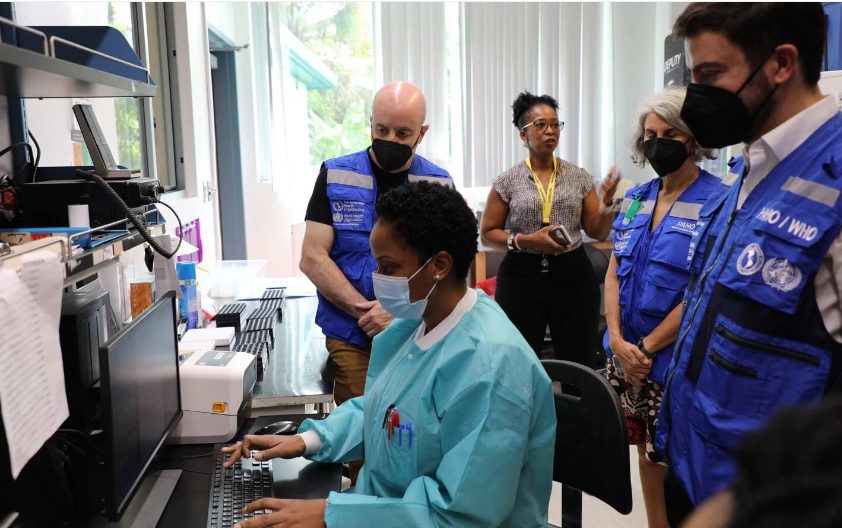Investing In 24 Cents Per Patient Annually In Digital Health Could Save 2 Million Lives

Investing in as little as $0.24 per patient per year in digital health interventions – telemedicine, mobile messaging, and chatbots – could significantly lower the burden of non-communicable diseases (NCDs), says a new report from the World Health Organization (WHO) and the International Telecommunication Union (UTI). These interventions could avert 2 million deaths and 7 million acute events and hospitalizations over the next decade.
The report comes as the United Nations General Assembly meets in New York City this week.
Non-communicable diseases cause 74% of all deaths globally and are on track to cost $30 trillion in lost productivity by 2030.
The newly released publication highlights the promise of digital health interventions in tackling this growing crisis, especially through expanded healthcare access. Behavioral choices fuel many NCDs, says the report, and digital health could enable individuals to “take control of their own health and well-being” through personalized health content delivery.
Digital health interventions proved to be powerful tools in managing NCDs during the COVID-19 pandemic, from electronic vaccine passes to telemedicine, but the report warns that the rollout of these technologies requires widespread access, and guardrails to protect patient data.
“The future of health is digital,” said WHO director-general Tedros Adhanom Ghebreyesus and Doreen Bogdan Martin, ITU secretary-general in a statement. “We must work together to promote universal access to these innovations and prevent them from becoming another driver of inequality. While the new technologies hold great potential, strong governance, ethics, digital skills and equity are essential to realize their potential and to avoid risks such as unethical data collection and biases encoded in artificial intelligence.”
Chat bots, telemedicine, online counseling could “close gap” of NCD care

Chronic conditions typically require long-term management, which is often unavailable at primary health care level in many low- and middle-income countries.
So digital health solutions “can help patients to track their symptoms, manage their medications and monitor their progress over time,” the WHO report notes.
Patients, healthcare providers, and the public can use these tools for diagnosis, treatment and management and for disease prevention through diet and lifestyle interventions.
Digital health interventions span a host of technologies, including: online programs for patient education; mobile apps, virtual reality, and other telehealth and telemedicine technologies for rapid diagnosis and treatment; connected and wearable devices for monitoring health conditions; as well as online peer support and counseling. Meanwhile, the health sector is incorporating artificial intelligence and big data-enabled apps to diagnose, monitor, and support NCDs.
“The digital revolution has the potential to unleash a health revolution,” said Bogdan-Martin at the report release, on the margins of the UN General Assembly’s Summit for the Future in New York City.
Digital tools can support individuals in understanding their risk factors for NCDs, WHO said in a statement. “Four major risk factors linked to our everyday environment – tobacco use, unhealthy diet, the harmful use of alcohol and physical inactivity – drive responses in our bodies that also increase NCD risk: raised blood pressure, obesity, raised blood glucose and raised cholesterol.”
Mental health condittions – prevention and treatment
The report warns that in addition to NCDs, mental health conditions present a looming concern – and one that is in dire need of more healthcare coverage, including through digital solutions. In 2019 alone, nearly a billion people lived with a mental disorder, of whom only a “fraction” received care. These conditions account for the largest proportion of years lived with disability, and lead to a higher risk of premature death.
With expanded healthcare delivery options, argues the report, people with mental health conditions are more likely to seek timely care. For a person living with dementia, for example, a service like mobile messaging with a doctor provides discreet access to support.
These measures can continue to optimize health service delivery and influence health-related behavior, especially when it comes to preventing and managing NCDs, says the report.
COVID-19 pandemic shed light on digital health potential

With healthcare systems disrupted during the COVID-19 pandemic, many providers switched to offering digital services when possible. Health systems quickly turned to online counseling, telemedicine, and digital vaccine records to continue providing care.
Now, though, for patients in rural or underserved areas, the benefits of digital health measures means telemedicine is here to stay to overcome the barriers to accessing health care, including geographical distance, transport and cost.
Improving the quality of care: Giving health-care professionals access to real-time patient data and decision support tools can help them make more informed decisions about treatment.
While significant progress has been made in combating NCDs, the integration of digital health technologies into mainstream health systems remains a “challenge,” the WHO said in a statement. For countries still developing internet infrastructure, digital health programs must first overcome internet access issues, and begin developing digital health strategies.
Only 60% of countries have such a strategy, and many are slow to integrate new technologies into existing health infrastructure, the WHO notes. Which is why the report highlights the urgency for country-level investments in digital infrastructure.
“We call for greater collaboration between the health and tech sectors, including the development of strong digital public infrastructure, essential for the delivery of digital health services that can benefit people everywhere without leaving anyone behind,” said Bodgan-Martin.
Image Credits: PAHO, WHO , WHO.
Combat the infodemic in health information and support health policy reporting from the global South. Our growing network of journalists in Africa, Asia, Geneva and New York connect the dots between regional realities and the big global debates, with evidence-based, open access news and analysis. To make a personal or organisational contribution click here on PayPal.

